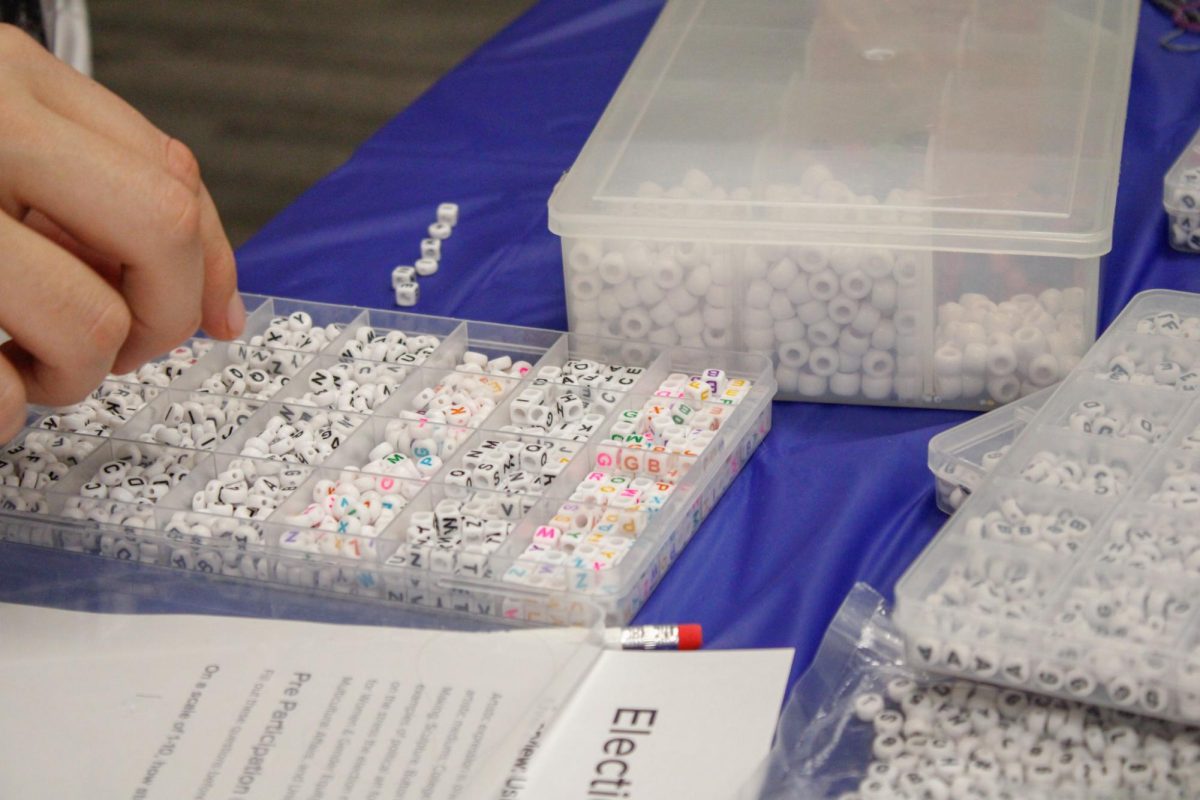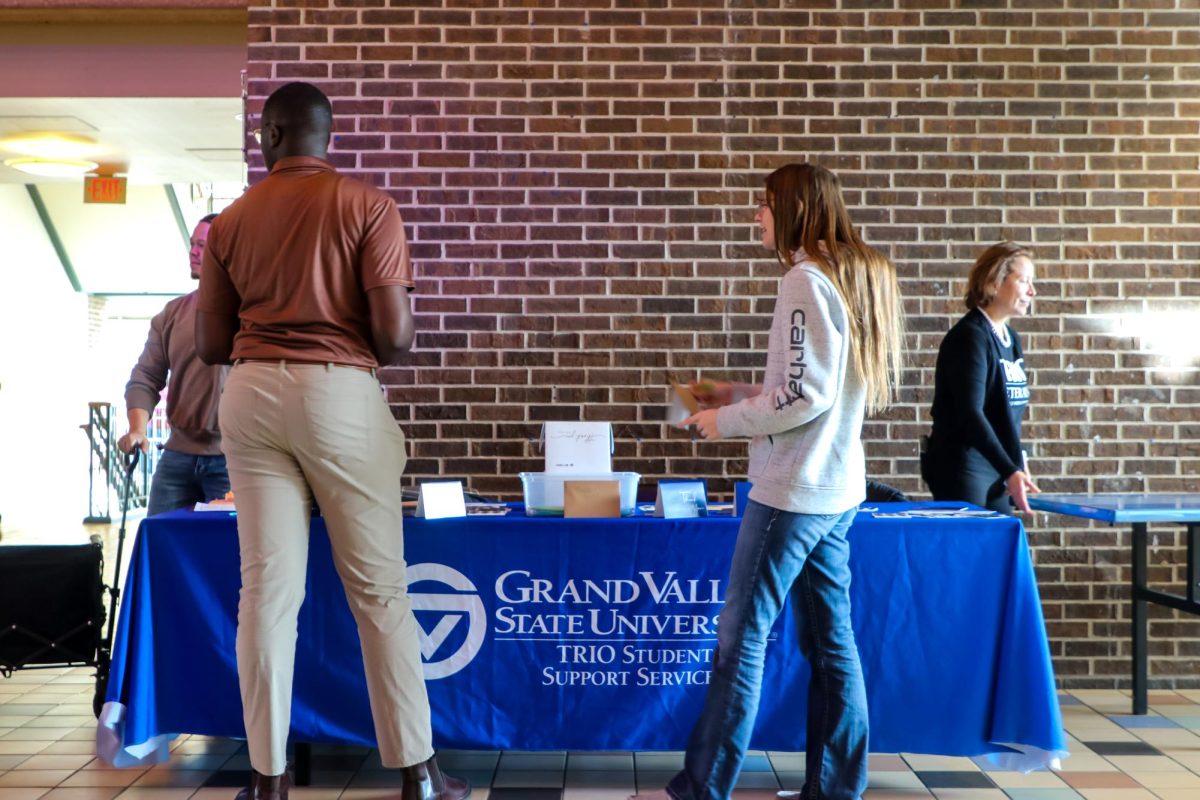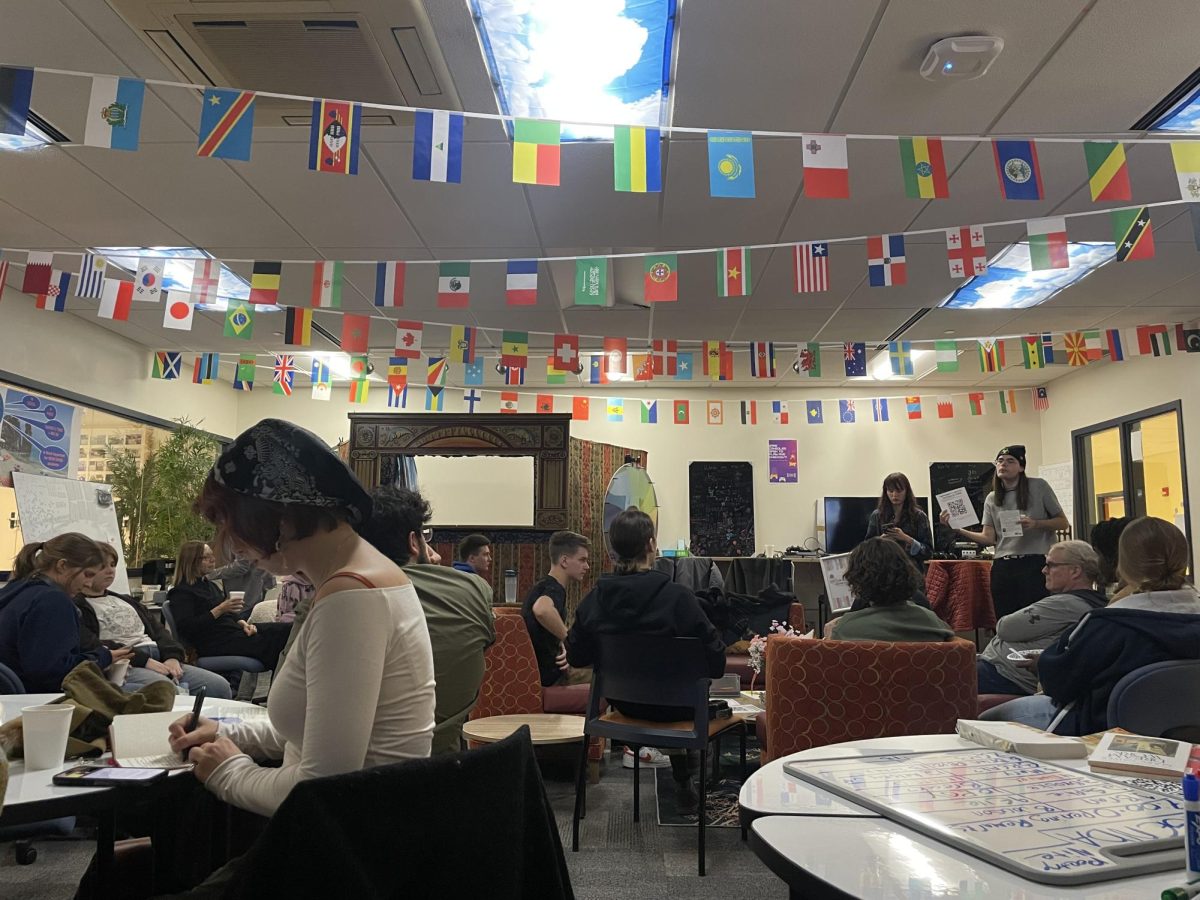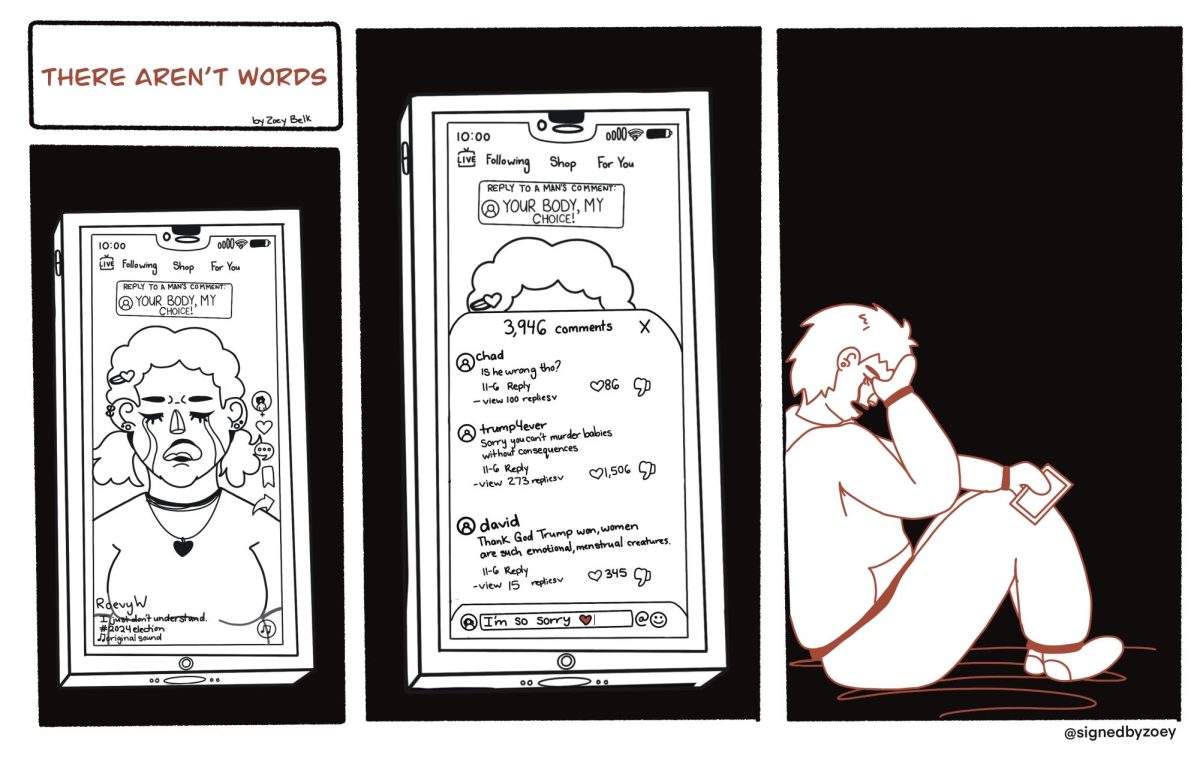GVSU releases 11th annual Accountability Report

GVL / Emily Frye Katie Gipe receives her diploma during the Grand Valley State University commencement on Saturday April 29, 2017.
Nov 9, 2017
The 11th annual Grand Valley State University Accountability Report, released Friday, Nov. 3, at the GVSU Board of Trustees meeting in the Kirkhof Center, revealed a steady rate of strong performance.
The purpose of this report is to assess what students are getting out of their education and how successful the university is at delivering its promise of a quality education at GVSU. The results of this report were measured based on the seven core values of GVSU’s 2016-21 strategic plan: excellence, integrity, inquiry, inclusiveness, community, sustainability and innovation.
According to the report, GVSU continues to rank exceptionally well in the areas of retention rate, graduation rate, degrees awarded in critical skills, Pell-eligible students and accessibility by qualified students.
For the fourth year in a row, GVSU has enrolled more than 25,000 students, and for the sixth consecutive year, GVSU has seen more than 4,000 freshmen alone join the GVSU community. This year’s enrollment number is 25,049, in comparison to Michigan State University’s 49,042, University of Michigan’s 45,846 and Wayne State University’s 27,089. Even more significant, the freshman-to-sophomore retention rate holds steady at 84 percent, ensuring the likelihood that GVSU’s incoming classes will be Lakers for a lifetime.
“What we’ve been able to do over the years is create a place where students want to be, (where) they want to come … to get their degree and experience a program that’s going to be helpful to them in their future,” said GVSU President Thomas Haas. “And I think we’ve been able to … create a university students want to be a part of because we’re focusing in on their success.”
The university has seen a slight increase in the diversity on campus as a record number of students of color (4,344) joined GVSU’s campus in 2017.
“Diversity is an intellectual asset for a university, and when we have individuals that have their own backgrounds and values, we create a much more robust and vibrant learning community,” Haas said. “When we create that type of university, people want to join us (and) students want (to) experience what we have here because we’re providing great value.
“I am very, very pleased that we are attracting people from different parts of the state, different parts of the nation and the world, and with those different backgrounds they bring, we (become) a better university.”
GVSU’s strong graduation rate of 66 percent is likely to attract incoming students. GVSU ranked at the fourth highest compared to 15 other public universities in Michigan, 11 of which ranked below 60 percent.
The university continues to push for these high graduation rates by providing the Grand Finish Grant, which awards students up to $1,000 for graduating in four years. More than 2,650 students received this grant during the 2016-17 school year.
“We have literally thousands of students now (that) have taken advantage of that particular incentive financially now to keep them on track,” Haas said. “I am very, very pleased that we have continued to see the debt load of our students that graduate within four years go down and have about a third of our students have no debt if they graduate within four years.
“I am really pleased with the efforts we had to create something that is unique in higher education with that particular (grant).”
After graduating from GVSU, students often continue on the path to success, as the pass rate of graduates on licensure and certification exams is 100 percent in a series of demanding fields.
These areas of study include finance, nursing (doctoral child/adolescent nurse practitioner), physical therapy, police academy, military police basic training program, and speech and language pathology. Other impressive pass rates include occupational therapy (98 percent), physician assistant (98 percent), athletic training (96 percent) and medical laboratory science (94 percent), according to the Accountability Report.
These passing scores contribute to the 93 percent of recent graduates who are employed or in graduate school and 86 percent of graduates who are working in Michigan.
Despite the performance of GVSU graduates, GVSU has received the second-lowest funding per student from state appropriation for the past five years.
Haas said the allocation GVSU receives from the state of Michigan is not adjusted based on performance and is not given on a per-student basis.
“We have tried to increase (the funding) for my 11 and half years here,” Haas said. “Past presidents have tried to increase it. What we are faced with fundamentally is the state does not take into account any increases in the number of students that the university is serving. They do not, in Michigan, allocate on a per-student basis.”
At the meeting, the Board of Trustees also approved a series of new degrees available at GVSU, including a doctorate in occupational therapy in the College of Health Professions, a bachelor’s degree in information technology in the Padnos College of Engineering and Computing, and a bachelor’s degree in sports management in the College of Liberal Arts and Sciences.
Overall, Haas is pleased with this year’s Accountability Report and GVSU’s continued improvement. Even so, he continues to look toward the future development of the university. Haas would like to work on items like ensuring campus safety and also providing degrees from all ends of the spectrum, from engineering to liberal arts programs.
“I think continuously that I want to make sure we are the best place for student success and that we have … the nation’s smallest large university,” he said. “What that means really is that we will never move away from our focus on individual students while they’re matriculated at the university.”























